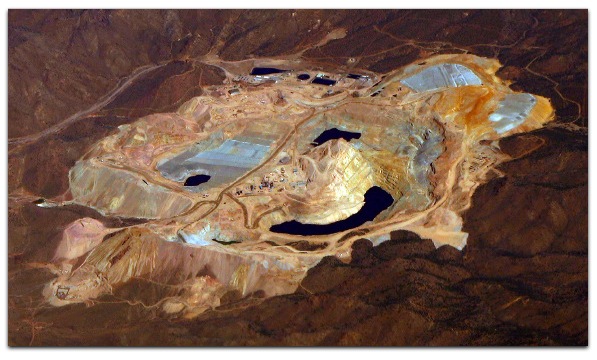When I couldn’t sleep last night, I uploaded another pile of pix shot out the window during a flight last month from Boston to Los Angeles. This segment runs from the Mineral Hill Mine in Arizona to Slide Peak in the San Bernardino Mountains east of Los Angeles.
The picture above is of the the mine at Mineral Park, Arizona. Once home to a settlement of 700 people, it’s now a ghost town.
What intrigued me, even from 30 miles away, was the “happy face” look of the mine, produced by the small ponds in the mine’s depths.

Leave a Reply